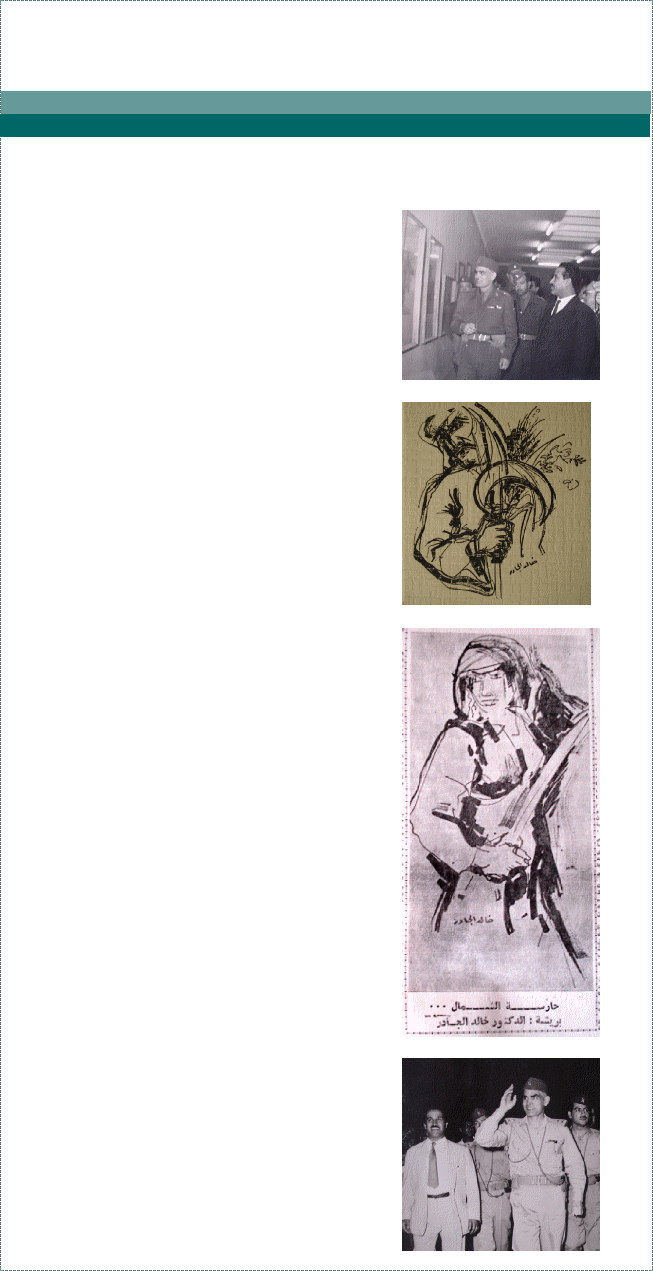
Introduction - 1 - 2 - 3 - 4 | CV - The Artist - The Professor - The Scholar
4. The Precursor of Contemporary Expressionist Art in Iraq
© Saad Al-Jadir 2011
The Iraqi artist and art critique Shawkat Al-Rubai’ wrote: "The paintings of Al-Jadir present a deep analysis of the environment and a close depiction of the social reality. It is an outstanding blending of simplicity and reality, between synthesis and clarity."
The Iraqi art critique Farouq Yussuf explains that Al-Jadir’s work was simple in its nature, built of few lines, which, sometimes matching, some times breaking, and inclinations other times, they create a vast universe that triggers in the viewer surprise and astonishment as if it were a virtual world.
Al-Jadir, in A’dil Kamil’s words, was the founder and one of the pioneering figures of Arab and Iraqi art since the 1940s.
His student, artist Hosni Abou Al-Ma’aly said that Al-Jadir did not have in his life time a chance to enjoy the golden glory of his artistic achievements, but the real glory is, doubtless in his own art works, which like gold, is imperishable and everlasting.
Artist Mahoud Ahmed, one of his students, wrote that Al-Jadir represented one of the pioneers of our art movement; he is indeed its spiritual father, by virtue of the precious contribution he made to lay down its foundational structure and the flow of his heartful and spiritual support.
Regarding an exhibition Al-Jadir held in Riyadh, Saudi Arabia in 1969, Shakir Hassan Al-Sa’eed pointed out that every painting in the exhibition seemed local in the reality of its depicted subject, yet it remained a universal heritage, carrying stamps of the modern age with a flow of a spiritual mystery peculiar to the orient. The realistic attempts go beyond the natural and reach out to the human.
About one of his exhibitions in Morocco, that of 1983, academician and the Minister of Culture, Sa’eed Belbasheer, said that one could clearly perceive the artistic and social commitment in the art work of Al-Jadir, who illustrated aspects of Moroccan social life in bright colors and articulate harmony and skillfulness.
Here are some opinions from the readers of articles written about Khalid Al-Jadir’s work:
Salma Al-Mousawi states that, “Al-Jadir is really an artist who painted history with letters of sunlight.” While Hiba Haider said “he is a great landmark to inspire future generations.” On the other hand Leena Younis expounds that, “he is a very special artist that the Iraqi and Arab world are proud of. He left a treasure of art works for all of us and for the coming generation to learn from and mediate with.” As to Mohsen Balasim, he argues that, “it might be true that Iraq lost Khalid Al-Jadir, but it has inherited the invaluable legacy that he left, which will certainly serve as a guiding light for future Iraqi generations.” While Basma Hanna wrote, “You allowed us, the Assyrians, some place in your art, because some day you visited our villages and painted them. We bow in awe in front of your memory.”
Khalid Al-Jadir